
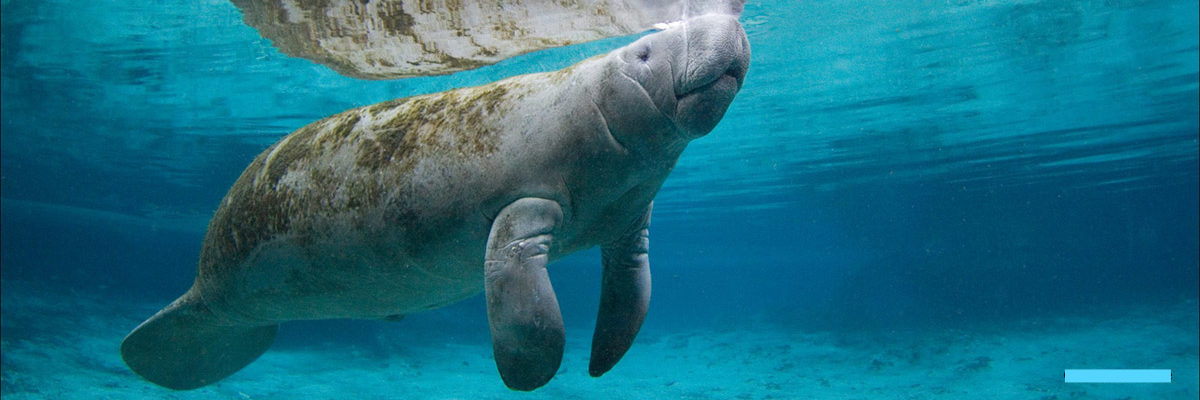
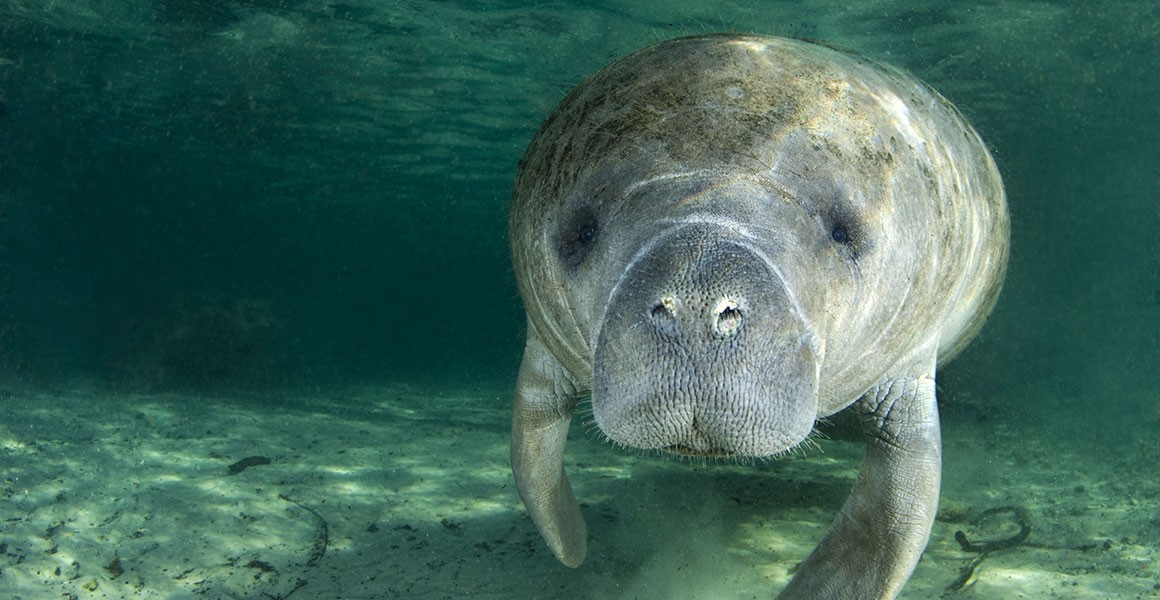

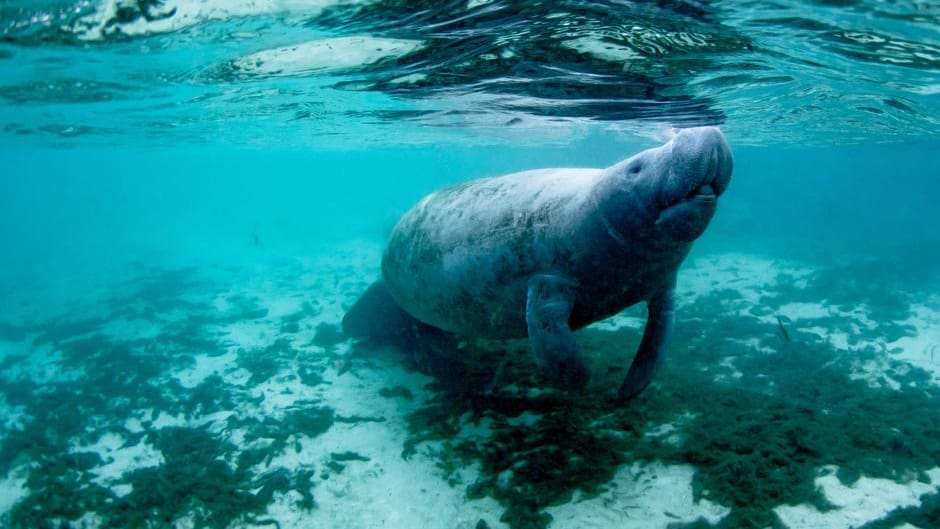
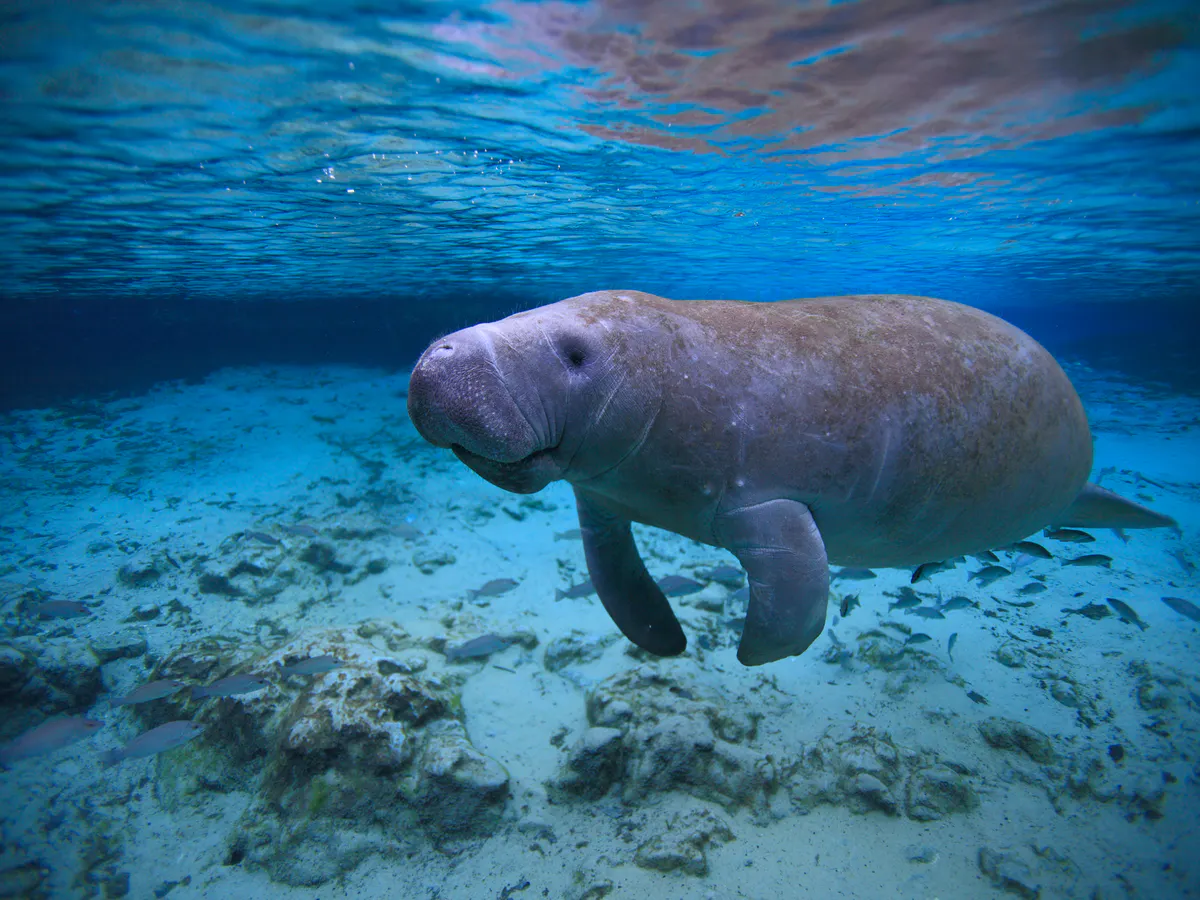
 Manatees inhabit rivers, bays, canals, estuaries and coastal areas moving freely between fresh, saline and brackish waters. |
 They eat water grasses, weeds, and algae-and lots of them. A manatee can eat a tenth of its own massive weight in just 24 hours. |
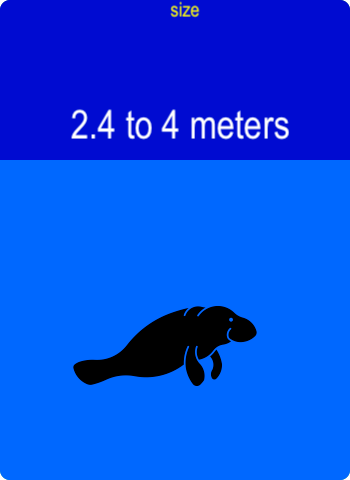
|
Manatees are at home in the water-they never come onto land. They swim along, poking their nose above the water to catch a breath every few minutes. Should they decide to nap, they can stay underwater for 20 minutes without taking a breath! When they do take a breath, they do it well: 90 percent of the air in their lungs is replaced, while humans, in contrast, only replace about 10 percent.
Crocodiles, alligators, and sharks may take young or weak manatees-their potential predators depend on where they live. But as healthy adults, this large, lumbering marine mammal has no natural predators, although human activities including boating, hunting, and pollution have impacted all three species of manatee. For instance, about half the deaths of West Indian manatees are due to boat collisions.
Overall, manatees appear slow moving and cumbersome, but they are graceful and can be swift underwater. Manatees usually travel at about 5 miles per hour (8 kilometers per hour), but in a pinch they can pick up the pace to 15 miles per hour (24 kilometers per hour). They often linger near the surface of the water, where they can suffer collisions with speedboats and other vessels.